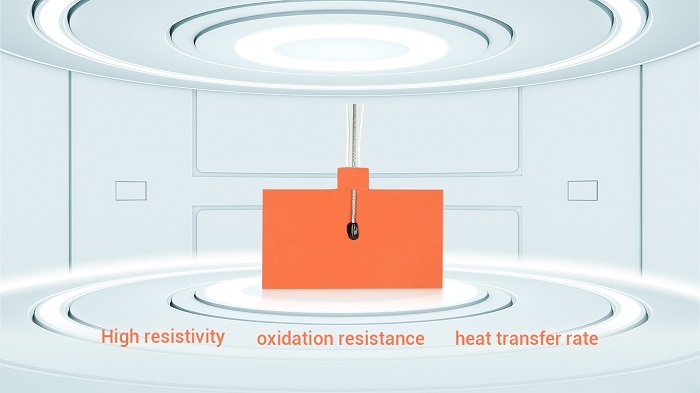Manufacturer of industrial silicone heating elements, small batch to large batch production, to solve problems such as constant temperature and harsh weather.
Voltage: 1-380V
Insulation Material: Silicone
Thickness: 1-3MM (Conventional 1.5MM)
Static Power Deviation: +/-5% (According To Customer Requirements)
Withstand Voltage: withstand Voltage AC 1500V 5MA/min
Insulation: Insulation DC 1000V >100MΩ
Temperature: -40°C - 250°C (Below 200°C For Long-term Use)
Installation Method: Adhesive Paste, Installation Through mechanical Installation Holes
Solder Joint Insulation Treatment: Epoxy, Silicone Pressure
Temperature Control Method: Adjustable Thermostat, Temperature Fuse, Temperature Control Switch


Etched foil heaters utilize chemically etched circuits sandwiched between thin layers of silicone rubber to enhance the heat transfer performance for applications that require precise temperature control. Although etched foil circuits require wider traces to achieve equivalent resistance compared to wire elements, the traditional printing/etching process used in circuit board manufacturing allows for strict spacing control, enabling trace spacing as close as 0.004". Our design team ensures precise circuit geometries to ensure uniform heat distribution and consistent repeatability throughout the production process.
Silicone rubber heaters utilizing etched foil circuits can provide twice the output power compared to older wire-wound technologies. This technology allows for the integration of multiple heating zones on a single heater, making it suitable for designs that require power densities greater than 5 W/in². The foil thickness of the circuit ranges from 0.0005" to 0.004".Wire-wound heaters employ wire elements wound between layers of silicone rubber. This structure ensures even heat distribution and provides excellent physical strength. Wire-wound heaters are typically used in applications that require larger sizes or lower production volumes. They can adapt flexibly to different shapes and sizes without the need for holes or notches.

